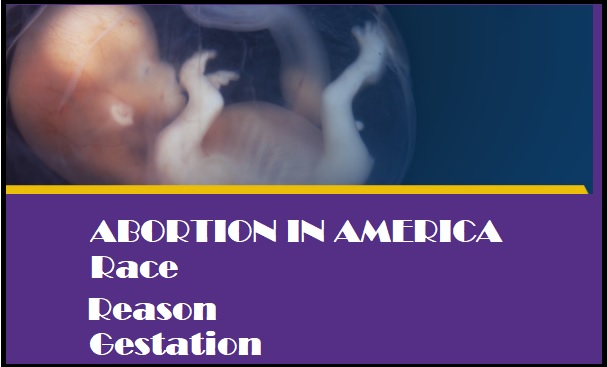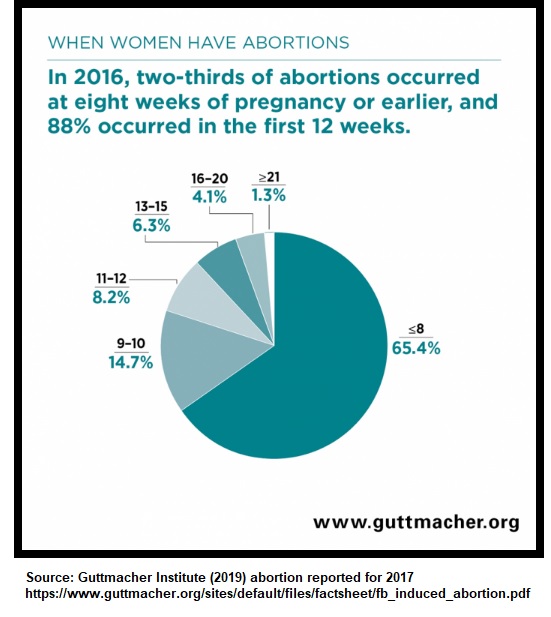Live Action and Live Action News frequently receive questions about the abortion issue. One of the most common is about how the United States track statistics on abortion — who’s getting them, how many they’re getting, and why they’re getting them. Below is information to help answer some of those questions.
How abortion data is collected:
There are two national groups that collect data on abortion, and there are a number of differences in the two reporting agencies.
- The Centers for Disease Control (CDC) collects information the states provide, but due to a wide variety of state requirements on abortions, CDC fails to report abortion numbers for a number of states. In 2016, the CDC reported a total of 623,471 total abortions, and in 2018, the CDC reported 619,591 abortions. Live Action News’ analysis of those numbers is here.
- Guttmacher numbers are more comprehensive since they gather their information from a number of contacts directly with abortion providers. In 2017, the Guttmacher Institute reported a total of 862,320 abortions. Live Action News’ analysis of those numbers is here.

Abortion stats in USA race gestation reason
Abortions by race:
- As of September 2019, the most current data on abortions by race from Guttmacher is from 2014 and is limited to only the percentage of abortions. Read our analysis here.
- As of November 2020, the CDC’s most current numbers for race/ethnicity are from 2018, but only include 31 reporting areas.
- Planned Parenthood committed 40 percent of all abortions in 2018. But they don’t break down their abortion numbers by race.
The reasons given for abortion:
Not all states report abortion data, and only a few states require “reasons” to be given; therefore, this data is extremely limited.
- To date, Live Action News has not reviewed the most recent state reports on abortions for “reasons.” Our most recent analysis was conducted in 2018 and some of these numbers have since been updated. Read it here.
- Our friends over at the Charlotte Lozier Institute regularly analyze state reports on abortion as they are published and you can scroll through those reports by state here.
Abortion data by gestation (late-term abortion):
Guttmacher’s latest report (2017) specifies that two-thirds of abortions took place at eight weeks or earlier, and the graph below (2016) gives us some indication on the numbers of later abortions. Using Guttmacher’s reported abortion numbers for 2017, we discover that over 100,000 (100,891) abortions took place in the second trimester or later.
- 8 weeks or less (65.4%) – 563,957 abortions
- 9-10 weeks (14.7%) – 126,761 abortions
- 11-12 weeks (8.2%) – 70,710 abortions
- 13-15 weeks (6.3%) – 54,326 abortions
- 16-20 weeks (4.1%) – 35,355 abortions
- At or greater than 21 weeks (1.3%) – 11,210 abortions

Guttmacher 2016 abortion by trimester (Graph: Guttmacher Institute)
For more on this topic, click here.
What about Roe v. Wade? Does it really permit abortions in all months of pregnancy?
See Live Action’s informative video on the subject here (articles here and here).
- On the federal level, Roe v. Wade and its companion case, Doe v. Bolton, have made it clear that abortions in all months of pregnancy for “health reasons” are legal.
- “Health” is an ambiguous term which may include a host of reasons, including familial, financial, and emotional health.
- Live Action News previously reported, “As defined by the Supreme Court’s rulings in Roe v. Wade and Doe v. Bolton, “health” can mean “physical, emotional, psychological, familial”…. These provisions—which are rarely mentioned by media outlets—provide broad leeway to perform abortions in practically every case….”
The “health exception”:
- The abortion industry has admitted that abortion later in pregnancy is frequently committed on healthy babies.
- In 2008, during the Feminist Majority Foundation’s annual Women’s Leadership Conference, late-term abortionist George Tiller conceded that late-term abortions are legal under the Roe v. Wade and Doe v. Bolton Supreme Court decisions: “[…W]e are able to use the wide definition and the full implementation of Roe v Wade decision which allows us to do post viability terminations of pregnancy. When read appropriately, the Roe versus Wade decision and the Bolton decisions says that, ‘A physician may use his judgement in determining all factors of a woman’s health, physical health, mental health, emotional health, family health, age of the patient, safety and well being.’ That’s the definition in the Roe v. Wade and the Bolton decision… The Bolton decision goes onto say that they understand that this allows wide latitude for the women…” Tiller later admitted that he had done abortions “up to the day before delivery.”
- Late-term abortionist Warren Hern, author of “the nation’s most widely used textbook on abortion standards and procedures,” declared, “I say every pregnancy carries a risk of death,” and “I will certify that any pregnancy is a threat to a woman’s life and could cause grievous injury to her physical health.” (Source: Live Action News)
- A teaching module published by an abortion training program at the UCSF Bixby Center for Global Reproductive Health reveals that physical health is almost never given as a reason for why a woman aborts after the first trimester.
- Live Action News previously documented that, according to recently unearthed testimony from a 2015 court case, Planned Parenthood considers all abortions “medically necessary.”
- The media knows that late-term abortions are often committed on healthy babies. All too often instead of reporting the facts, the media chooses to publish the abortion lobby’s talking points, as documented during the debate over so-called partial birth abortion.
Which states restrict whether minors can obtain abortions?
- Parental consent and/or notification is legislated at the state level.
- To locate state laws, inquire with local pro-life groups or research the statutes in each state.
- Guttmacher Institute publishes a general review of state statutes here.
What are the abortion laws in your state?
- A number of states are expanding abortion through Reproductive Health Acts, and Live Action News has previously covered many of these changes.
- In addition, Guttmacher, the former research arm and “special affiliate” of Planned Parenthood, publishes an overview of state abortion laws on a fairly regular basis. The most recent report is here.
“Like” Live Action News on Facebook for more pro-life news and commentary!







